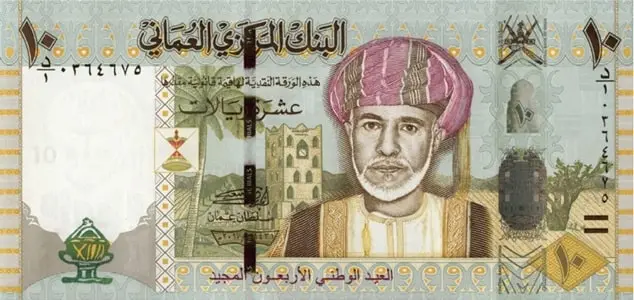Choosing the right bank in India can be a challenge, especially given the high rates of financial illiteracy.
Most Indians simply like to follow what their parents did and stick with the same bank. However, with the banking sector changing faster than ever, it’s important to think beyond familial recommendations.
Here, we’ve presented a list of top banks in India for 2024, along with a complete guide to help you select the best option that will meet your unique needs.

Criteria for Evaluating Banks: What Matters in 2024?
In India, there are four main categories of banks: commercial banks, payment banks, small finance banks, and cooperative banks.
Amongst these four, commercial banks are the most common ones and are further divided into two types: public-sector banks and private-sector banks.
There are a total of 90+ different commercial banks operating in India, meaning you get a lot of options to choose from. However, this makes it even tougher to select the right one.
Here are some critical parameters and trends to look for in 2024 that will help you make your decision.
1. Digitalization
In 2024, an online and mobile banking platform is a must for easy and efficient transactions. So, always look for banks that offer a user-friendly interface, features like secure login options, and a wide range of digital services.
Also, ensure that the bank you choose supports digital wallets and UPI payments so that you can reduce your reliance on cash. Plus, they should have a widespread ATM network for easy access to your funds.
2. Sustainability Initiatives
Banks that prioritize environmental, social, and governance (ESG) factors are the need of the hour. Thus, consider banks that support sustainable practices and invest in green initiatives.
Besides, if you have ethical concerns, look for banks that avoid investing in certain industries or practices that you don’t support.
3. Customer Service Innovation
Reliable customer support is essential for addressing queries and resolving issues promptly. Look for banks that offer 24/7 customer service channels, such as phone, email, and live chat.
Many top banks also offer personalized service and understand your specific needs to provide a better banking experience.
Banks are trying to double down on their CX initiatives by comprehensively investing in multiple touchpoints, like sending welcome kits to assigning the Relationship Managers to priority customers. This helps them turn their customers into lifetime assets and, ultimately, advocates. Look for banks that heavily focus on their customer experience and assign tremendous importance to this.
4. Lending Capability
The interest rate of your bank can significantly impact your future finances; hence, it is important to be aware of it beforehand. Compare interest rates on various loan products, like personal loans, home loans, and car loans. Getting lower interest rates can save you money in the long run.
Also, learn about the bank’s loan approval process, including documentation requirements and processing time. A faster and more efficient process is a plus.
Apart from that, look if the bank offers flexible loan terms and options, such as zero prepayment penalties, add-on loans, and tenor extensions.
5. Financial Stability and Reputation
Check the bank’s financial stability and credit rating. A bank with a strong financial reputation is usually more reliable and trustworthy.
Since 2014, a total of 60 cooperative banks have shut down, including both urban and rural; hence, it is an important aspect to protect your financial security.
List of Top 10 Banks in India in 2024
Let’s take a quick look at the most common banks in India that are trusted by millions.
| Name of the bank | Number of customers | Number of branches in India | Number of ATMs/ ADWMs |
| State Bank of India (SBI) | Over 50 Crore | Over 22,500 | Over 63,580 |
| HDFC Bank | Approx. 120 Million | 8,919 | 21,163 |
| Punjab National Bank (PNB) | 180 Million | 12,248 | 13,000+ |
| ICICI Bank | Over 1.5 Million | 6,524 | 17,190 |
| Union Bank of India | 21 Crore | 8,400 | 9,300 |
| Kotak Mahindra Bank | 5.1 Crore | 1,869 | 3,239 |
| Axis Bank | Over a billion | 5,377 | 16,026 |
| IndusInd Bank | 38 Million | 2,728 | 2,939 |
| Yes Bank | 2 Million+ | 1,198 | 1,287+ |
| Bank of Baroda | 120 Million | 9,693 | 13,400 |
If you want more information about each bank, like year of founding, headquarters location, total asset value, current chairperson, etc, we have a compilation of that as well. So, please check out our detailed list of the top 10 banks in India.
Digital-first vs. Traditional Banking: Which Suits Your Needs?
Amongst the top banks listed above, some are becoming digitally inclined while some are still sticking with traditionalism.
However, how do you know which one is best for you? Let’s look at the overview of each and weigh their pros and cons.
Digital-first Banks
These banks are ideal for tech-savvy individuals and businesses that value convenience and efficiency.
- Key Features:
- Primarily online or mobile-based operations
- Minimal physical branches
- Emphasis on technology and innovation
- Often offer competitive interest rates and fees
- Pros:
- Convenience: Accessible from anywhere, anytime
- Efficiency: Faster transactions and less paperwork
- Lower Costs: Reduced overhead expenses can lead to better deals for customers
- Innovation: Continuously exploring new technologies and services
- Cons:
- Limited Personal Touch: This may lack the personal attention of traditional banks
- Security Concerns: While security measures are robust, there’s always a risk of cyberattacks
- Limited Services: They may not offer the same range of services as traditional banks, especially in rural areas
Examples: HDFC Bank, ICICI Bank, Kotak Mahindra Bank, Axis Bank, etc.
Traditional Banks
These banks are suitable for customers who prefer personal interactions and a wide range of services.
- Key Features:
- Extensive network of physical branches
- Strong customer relationships
- Traditional banking products and services
- Pros:
- Trust and Reliability: Well-established reputation and customer trust
- Personal Service: Face-to-face interactions and personalized advice
- Wide Range of Services: Offer a comprehensive suite of banking products
- Cons:
- Higher Costs: Operating costs associated with physical branches can lead to higher fees
- Slower Processes: Paper-based transactions and longer wait times
- Less Innovative: It may be slower to adopt new technologies
Examples: State Bank of India (SBI), Punjab National Bank (PNB), Union Bank of India, and Bank of Baroda.
Regional vs. National Banks
While most prefer associating with a national bank, regional banks over the years have gained significant popularity for multiple reasons, such as localized services, catering to specific regional needs, building deeper customer relationships, and so on.
Currently, there are almost 45 Rural Regional Banks (RRBs) in India.
You can consider them if you are looking for the following –
- Policies that support your regional needs
- Customized policies
- Better interest rates
However, they also come with challenges like –
- Limited scale
- Regulatory burdens
- Lack of digital facilities
Banking for Businesses vs. Individuals
The banking needs of businesses and individuals differ significantly. Therefore, while choosing the best bank in India, it is crucial you factor this.
Let’s first look at how requirements vary between businesses and individuals in different banking segments.
| Banking Segment | What Businesses Need | What Individuals Need |
| Loan offering | ● Term loans
● Overdrafts ● Working capital loans ● Project Finance |
● Personal loans
● Home loans ● Car loans ● Educational loans |
| Investment opportunities | ● Fixed deposits
● Mutual funds ● Bonds ● Equity investments |
● Savings accounts
● Recurring deposits ● Mutual funds ● Insurance |
| Wealth management services | ● Treasury management
● Investment advisory ● Mergers and acquisitions |
● Retirement planning
● Estate planning ● Tax planning |
Top Banks for Different Customer Segments
- SMEs:
These banks are mostly preferred by small and medium enterprises.
- HDFC Bank: Offers a wide range of SME-focused products, including loans, working capital facilities, and digital banking solutions.
- Axis Bank: Provides tailored banking solutions for SMEs, including business loans, overdrafts, and merchant services.
- Startups:
A lot of upcoming Indian startups love banking with the following banks for additional upsides.
- Yes Bank: Known for its support for startups, offering specialized loans, equity investments, and incubation programs.
- Kotak Mahindra Bank: Provides comprehensive banking solutions for startups, including seed funding, venture debt, and advisory services.
- High-Net-Worth Individuals (HNIs):
In India, a huge percentage of the wealth is concentrated in a small percentage of the population. These people with a major fraction of the National wealth are called HNIs. Typically, we’ve found that these high-net-worth individuals love banking with the following financial institutions.
- Standard Chartered Bank: Offers a suite of wealth management services, including investment advisory, estate planning, and private banking.
- HSBC: Provides global wealth management solutions, including investment management, trust and estate planning, and private banking.
Customer Satisfaction and NPS (Net Promoter Score)
Customer Satisfaction is a measure of how happy customers are with a product or service. It’s often assessed through surveys or feedback.
On the other hand, NPS (Net Promoter Score) is a metric used to gauge customer loyalty and satisfaction. It asks customers a single question: “How likely are you to recommend our company to a friend or colleague?” The answers are on a scale of 0-10.
The higher the NPS score, the greater the customer satisfaction and loyalty. Let’s look at the NPS of the top Indian banks.
| Bank Name | Net Promoter Scores (NPS) |
| HDFC | 67 |
| ICICI Bank | 70 |
| Kotak Mahindra Bank | 68 |
| Axis Bank | 68 |
| State Bank of India (SBI) | 62 |
| Bank of Baroda | 68 |
| Canara Bank | 37 |
Innovative Banking Features to Look Out for in 2024
In 2024, you must choose a bank that can provide you with crucial future-focused features. Here are some such features you should look for.
- AI chatbots: These can provide personalized recommendations based on your spending habits and preferences and instant support for common queries.
- Biometric authentication: Fingerprint, facial recognition, or voice recognition can provide more secure access to your accounts. This also eliminates the hassle of remembering passwords and PINs.
- Voice banking: This helps you make transactions using voice commands, making banking more convenient while on the go.
- Open banking: Some banks may allow you to share your financial data with third-party apps and services, enabling more personalized financial management tools.
- Digital wallets and contactless payments: These offer a secure and efficient way to make payments.
- Blockchain support: Blockchain can provide a secure and transparent way to conduct transactions.
Related Article: Best government banks in india
Conclusion
To maintain your financial well-being, choosing the right bank is crucial. Thus, ensure you consider factors like digitalization, customer support, lending capability, and financial stability of the bank.
Apart from these primary factors, choosing what is best for you, also weigh in factors like the specific needs of your region and the advantages offered by regional banks. If you are choosing a bank for business use, focus on offerings based on your needs.
In the end, the best will always vary based on your personal needs, so highlight them first and then match them with banks that can fulfill them the best.

